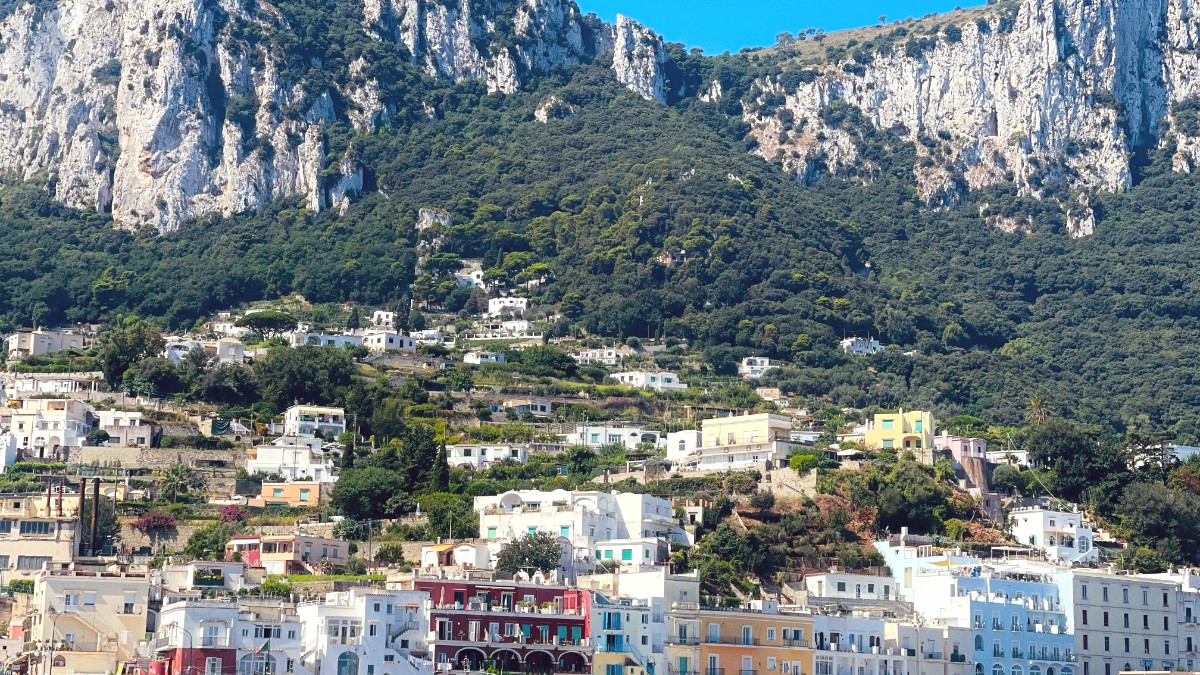
Campania, Italy
The funicular: This short railway connects Marina Grande (Capri's port) directly to Capri Town (the Piazzetta). It is the quickest and most popular way to ascend from the ferry terminal to the island's main hub. It operates frequently throughout the day.
Buses: The island's bus system is extensive and well-connected. Small, orange buses navigate the narrow, winding roads between the main towns and attractions. They present a reliable and economical way to get around.
Single bus/funicular ride costs around €2.20 - €2.90. Daily ticket ("biglietto giornaliero") around €7.20. Tickets available at ferry terminals, funicular/bus stations, and "tabacchi."
Be prepared for crowds on popular routes (Capri-Anacapri bus, funicular), especially in summer. Walk short distances instead of waiting for buses to avoid queues.
Capri's terrain presents challenges for mobility issues. Funicular holds some wheelchairs. Buses are generally not fully accessible. Many areas have stairs or uneven surfaces.
White or yellow, "TAXI" sign. Hail at stands (Capri Town, Anacapri, Marina Grande) or by phone.
More expensive than public transport; €15-€25 for short rides. Confirm fare before journey.
Cash often preferred by drivers, though some accept cards. Have Euros available.
Uber/Bolt are not available or widely used on Capri. Rely on local taxis.
Car rental is not recommended for tourists on Capri. Private cars for non-residents are generally forbidden on the island during the high season (typically from Easter until early November). This means you cannot bring a rental car from the mainland onto Capri, nor can you rent one on the island during these months. Visitors must leave their vehicles on the mainland at secure parking facilities at the Naples and Sorrento ferry ports.
Capri Town (Piazzetta, Via Camerelle) and Anacapri center are largely pedestrianized. Scenic paths like Via Tragara and Pizzolungo offer stunning views.
Many self-guided routes are available; maps from tourist offices. Local guides offer historical, cultural, or naturalistic walks.
Limited dedicated cycling infrastructure. Roads are narrow and steep, shared with buses and taxis. E-bikes are more practical for the terrain.
Capri also holds unique ways to get around, especially on its waters. Traditional large tour buses or hop-on-hop-off services are not available.
The island's many hills, steps, and cobblestone streets pose significant obstacles for travelers with mobility needs.
Limited overall accessibility.
The funicular is the most accessible public transport option between Marina Grande and Capri Town.
Wheelchair accommodation available.
Many hotels and attractions may have limited accessibility. Contact them directly to confirm specific features.
Consult specialized travel agencies.
These images illustrate common modes of transportation you will encounter on Capri, from the convenient funicular to classic island taxis and the scenic Monte Solaro chairlift.
The single-seat chairlift ascending Monte Solaro in Anacapri. A serene way to the island's highest point.
Capri's public buses are orange, navigating narrow roads for economical travel between towns and attractions.
The main arrival point for ferries, with immediate connections to funicular, buses, and taxis.
Capri, with its unique charm and diverse transportation, awaits your exploration. Embrace its beauty and varied ways of getting around.
Prepare for an unforgettable island adventure!